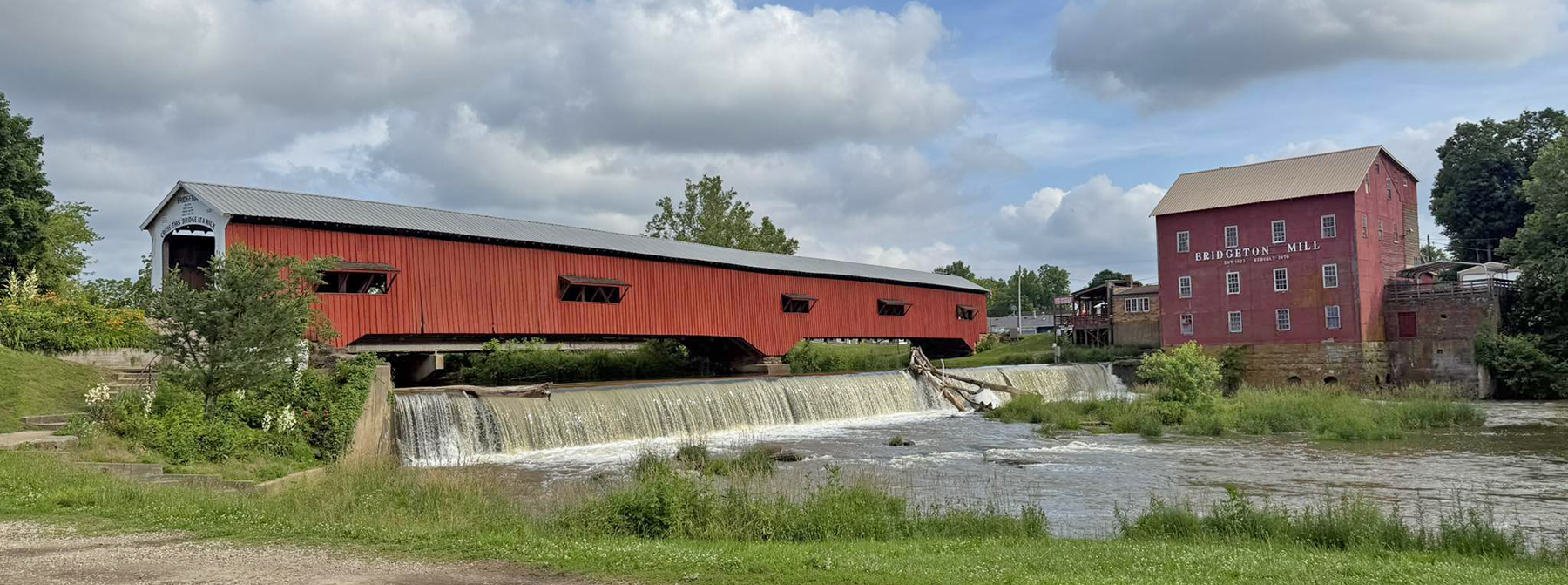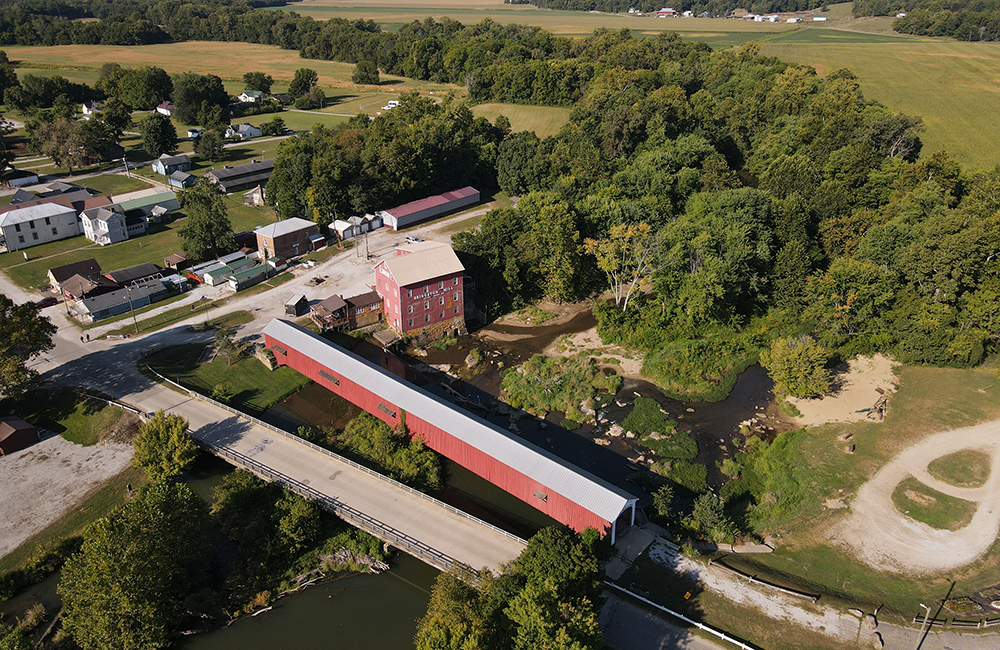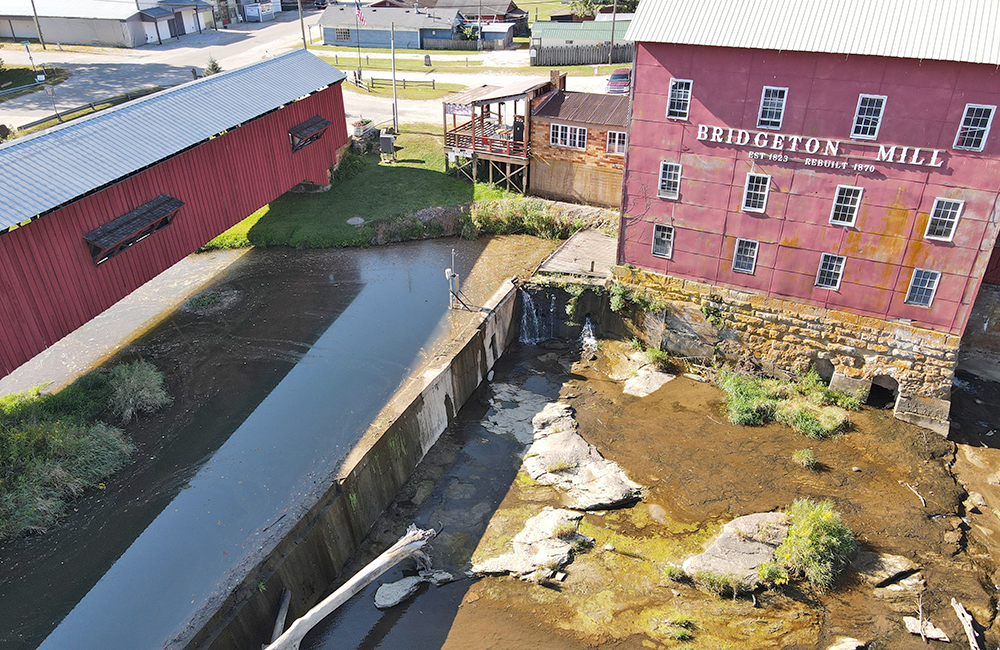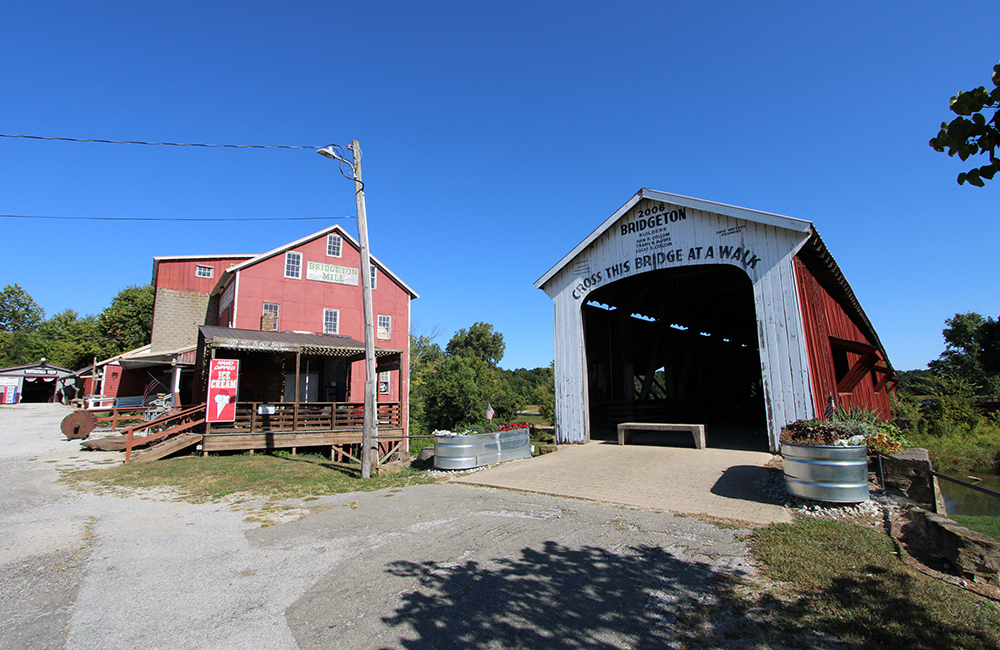Grist Mill History

Grist Mill History
The Bridgeton Mill holds the distinction of being the oldest continually operating mill in Indiana—possibly even in the entire Midwest.
While we can’t claim to be the very first, our true legacy is this: the mill has been open every single year since 1823.
It started as a saw mill in a log building
Over the years, the mill saw many changes. At one point, it was re-rigged to grind grain on the opposite side of the building (no doubt producing some unusual flour along the way).
In 1869, a fire destroyed the mill, but it was soon replaced with a larger structure built solely as a grist mill. During the 1880s, the latest roller milling technology was installed, and the mill operated as a roller mill until 1951. That year, a dust explosion destroyed the water power system, marking the end of its flour milling era.
The building was later electrified and continued as a feed mill until 1969. In 1970, a set of 48-inch French Buhr stones—massive grinding stones weighing over 2,000 pounds and believed to be around 200 years old—were installed, returning the mill to its grist milling roots.
Today, visitors can see these stones in action. Watch as they slowly and steadily grind wheat into flour and corn into meal, and even feel the floor tremble under their immense power.

Learn how one of the world's first automated factories was operated.
If you’re fortunate, the miller may have time to give you a tour of the Bridgeton Mill—where, among other unique sights, you’ll find one of the earliest versions of a “flush” toilet (depending on how you define “flush”).
The Bridgeton Mill is family-owned. Mike and Karen Roe purchased it from Mildred Weise, whose family had cared for it for more than 50 years. When the Roes took ownership in 1995, the building was in rough shape: windows were missing, the roof had gaping holes, and termites had destroyed nearly a quarter of the lower floors. It took three years just to stabilize the structure before restoration could even begin.
Today, the mill is fully restored, safe, and thriving—producing over 40 varieties of stone-ground, 100% natural products that the family is proud to share.
Bridgeton itself is a charming small town with 27 buildings listed in a National Historic District. Just “five miles from civilization,” it offers peace and quiet—no busy roads, no industry—only the gentle flow of Big Raccoon Creek, cascading over the waterfall beside the mill and passing beneath Indiana’s most famous covered bridge.
Come visit, linger a while, and explore the area’s beauty, including more than 30 covered bridges and another historic mill nearby.






